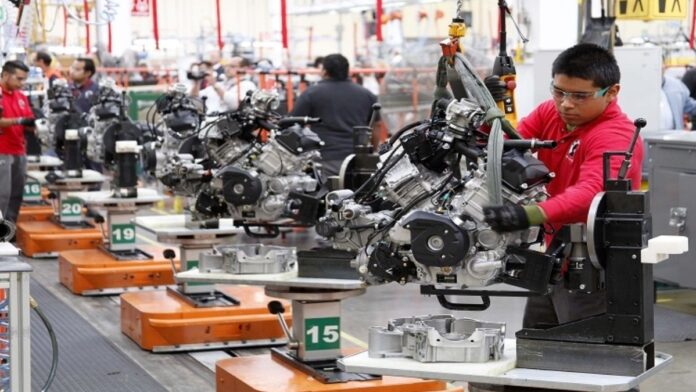
Tiempo de lectura aprox: 1 minutos, 16 segundos
Summary
The import substitution and nearshoring trends are driving a significant transformation in Mexico, with companies like General Motors, Foxconn, Intel, and MABE committed to replacing imported products with local production. This move presents a major opportunity for Mexico to become a global manufacturing hub, but success will depend on integrating local SMEs into global supply chains, replicating the economic growth models that have worked in Asia to create shared prosperity.
General Motors and Foxconn, two industry giants, are set to replace imports with local production in Mexico, a move confirmed by Mexico’s deputy economy minister, Vidal Llerenas. This shift, alongside similar commitments from Intel and MABE, highlights the growing trend of import substitution and nearshoring as companies reduce reliance on distant markets.
This reflects a broader opportunity for Mexico to capitalize on nearshoring and become a global manufacturing hub. However, for Mexico to fully realize this potential, it must focus on creating a diversified, resilient economy that integrates its small and medium-sized enterprises (SMEs) into global supply chains.
The success stories of Asia, particularly China, offer a crucial roadmap. Over the last four decades, China transitioned from an agrarian economy to the world’s manufacturing powerhouse, pulling millions out of poverty. This transformation was driven by infrastructure investment, education, and technology, alongside fostering public-private partnerships. Large national conglomerates led the way, while SMEs thrived within supply chains.
Mexico’s potential lies in replicating this model. The government’s talks with firms like DHL and Stellantis about localizing production point to the strategic importance of integrating domestic industries. By fostering collaboration between multinationals, local conglomerates, and SMEs, Mexico can create an environment where prosperity is shared, much like Asia’s model.
For nearshoring to reach its full potential, Mexico must support this integration through policies that incentivize local sourcing, provide assistance to SMEs, and invest in workforce development. By doing so, the country can transition from being a low-cost manufacturing destination to a dynamic player in the global value chain, where both large corporations and local businesses thrive together.
The announcements from GM, Foxconn, and others signal the beginning of this transformation. But if Mexico aims to create shared prosperity, it must maximize the participation of all economic players, from global corporations to local SMEs, echoing the success stories of Asia.
También te puede interesar: Acapulco de pie y en reactivación económica; se prepara para el Mundial de Pádel







